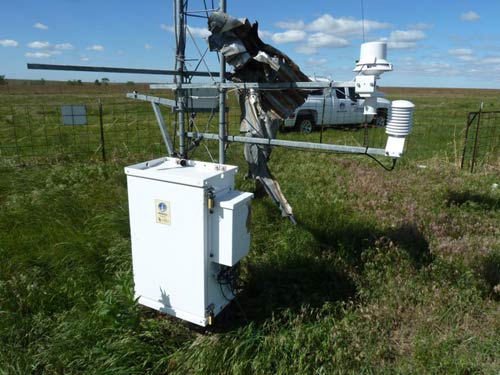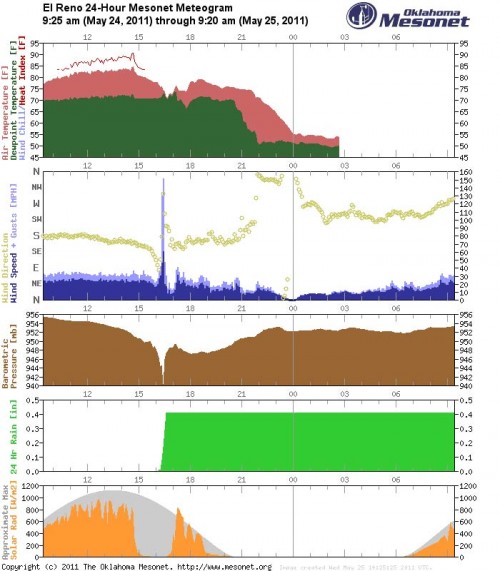by Jack Fellows and Paul Higgins
Every year the AMS and UCAR together send one member of our community to work for a member of Congress or a congressional committee through its congressional science fellowship program. The deadline for applying for next year’s fellowship is rapidly approaching, so consider now how this opportunity could enhance your career while giving you a chance to help shape the future.
The program has two goals: (1) to ensure that Congressional policy makers have ready access to the best available scientific information; and (2) to provide policy experiences for community members who think they’d like to pursue a policy career (i.e., develop key decision makers for the future).
David Reid-Miller, the 2010-2011 AMS/UCAR Congressional Fellow, served as a Legislative Fellow in Sen. Mark Udall’s (D-CO) office advising him on an array of energy issues. David says of the experience: “The deadlines were often fast and usually changing – and the request never the same. Whether it was clean energy R&D at DOE, fossil fuel subsidies, developing renewable energy on public lands, or crafting the DOD Energy Security Act – I not only learned how to balance the many interests in a “purple” state like Colorado, but I gained enormous insight into the policymaking process and expertise in a range of topics outside my dissertation research. It was a phenomenal experience – the only regret about it is that it only lasted one year!”
The Fellows bring to the Congress new insights, fresh ideas, extensive knowledge, and education in a variety of disciplines. Not only are the Fellows provided with the opportunity to make a significant public service contribution, but they also obtain firsthand experience in the legislative and political process. Fellows gain a perspective which, ideally, should help them understand how the research community effectively communicates with the larger society on important national policy issues. Fellows may have the opportunity to make significant contributions to public policy making within Congress on disaster preparedness and response, global change, water and energy policy, defense technologies, AIDS, pollution, communications technologies, and many other issues.
The AMS/UCAR fellowship is managed along with over 30 other professional science societies by the American Association for the Advancement of Science (AAAS). The AAAS reports that these fellowship programs continue to have significant impact based on: (1) the number of Fellows has increased over the years; (2) there are many more congressional requests for possible assignments than there are Fellows; (3) former Fellows are assuming senior positions in Congress, the Executive Branch, academia, and in the private sector; (4) overall, large numbers of qualified individuals continue to apply to the various sponsoring organizations for the fellowships; and (5) reports from the Congress about individual Fellows and the program have been highly laudatory.
What Fellows Do. Fellows perform every type of work normally asked of the permanent congressional staff, whether they are in members’ offices or with committees. The range of activities is illustrated by these examples:
- Assist in preparation of major parts of legislation from preliminary agency reviews to House-Senate conferences and final enactment into law;
- Work on legislative and oversight activities on budgets for various agencies, such as NOAA, NASA, EPA, the National Science Foundation, the Department of Energy, the Department of the Interior, and the Department of Defense;
- Assist with oversight investigations into major national problems such as global change, hazardous wastes, natural disasters, ground water, acid rain, etc.;
- Help prepare Members for debates on the floors of the House and Senate;
- Write speeches and other materials for Members on a wide range of topics;
- Provide liaison and coordination with committees to which a Member is assigned;
- Give briefings and arrange for public hearings; and,
- Meet with lobbyists, members of the public, agency representatives, and many others.
For example, Kim Mueller, the 2011-2012 AMS/UCAR Congressional Fellow, is currently serving with the U.S. House of Representatives Natural Resource Committee. As part of her assignment on the committee, Kim primarily works on climate change issues, helping to organize briefings for staff and members of Congress, preparing members of the Committee for hearings and events, and researching climate change legislation. Kim also participated in the 17th Conference of the Parties (COP17) to the United Nations Framework Convention on Climate Change (UNFCCC) in Durban South Africa last month.
Fellowship Term, Stipend, Administration, and Application. Fellowships usually run from September through August. The stipend for the Fellow is $55,000, plus allowances toward relocation, in-service travel, and health and dental insurance premiums. AAAS organizes a two-week orientation period in Washington in early September. This orientation includes seminars on the Congress and the Executive Branch; meetings with former Fellows, members of Congress, and staff; and preparing for placement in the Congress. There will be over 30 Fellows in the class, sponsored by over two dozen different societies. Following orientation and interviews on Capitol Hill, the AMS/UCAR Fellow will select a position in the House or Senate. Throughout the year, the AMS/UCAR Fellow will join with other AAAS Fellows in participating in seminars, and social and other class activities sponsored by the AAAS. The AMS/UCAR Fellow will also be invited to attend and report on his or her activities at AMS and UCAR meetings.
We strongly encourage you to apply – see http://www.ametsoc.org/csf. Applications are due to the AMS by March 15, 2012!

